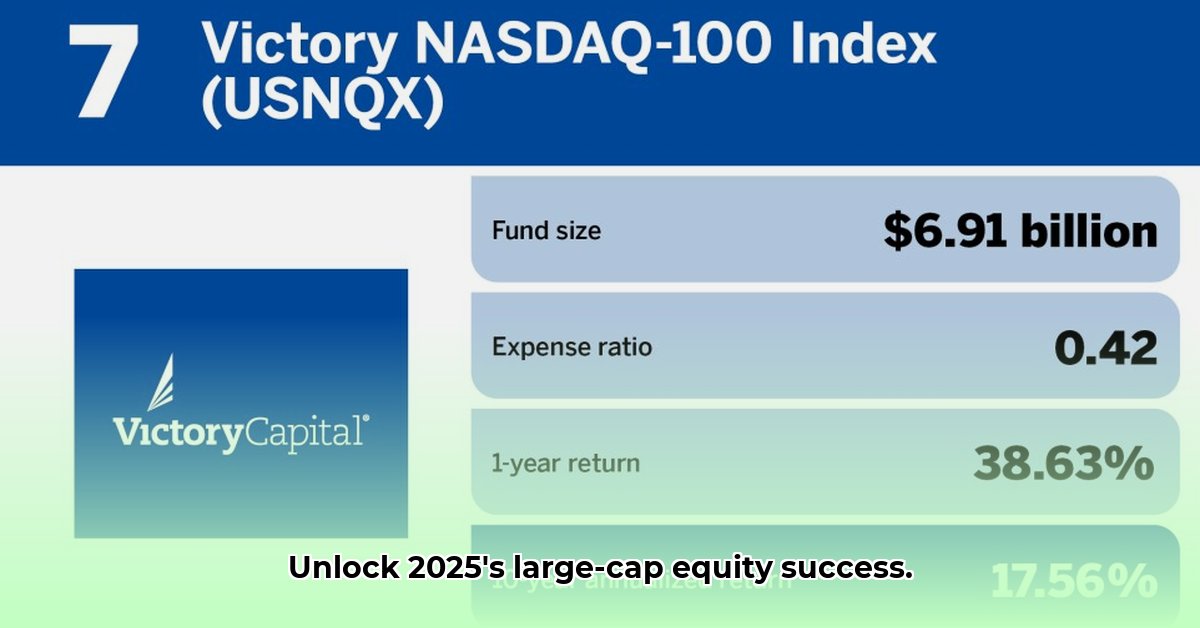
Navigating the world of US large-cap equity funds can feel overwhelming. This guide provides a clear, step-by-step approach to building a successful, low-fee investment portfolio. Whether you're a seasoned investor or just starting, we'll empower you to make informed decisions.
Understanding Large-Cap Investing
Investing in US large-cap equity funds means investing in a collection of stocks from America's biggest, most established companies—think household names like Apple, Microsoft, and Amazon. These funds often track major market indexes like the S&P 500, providing broad diversification and generally lower risk compared to smaller-company stocks. However, remember that even large companies experience market fluctuations.
Many firms offer these funds, but Vanguard and Fidelity are frequently cited for their exceptionally low fees. These low costs directly translate to higher returns over time – a crucial factor often overlooked.
Choosing the Right Fund: A 6-Step Process
Selecting the right large-cap equity fund is personalized; your ideal fund depends on your goals and risk tolerance. Follow these steps:
Step 1: Define Your Investment Goals: What are you saving for? Retirement? A down payment? Your goal dictates your timeline and risk tolerance. Longer timelines often allow for more risk.
Step 2: Assess Your Risk Tolerance: Are you comfortable with potential short-term losses for potentially higher long-term gains, or do you prefer a more conservative approach prioritizing stability? Knowing your risk tolerance is paramount.
Step 3: Prioritize Low Fees: Fund expense ratios (the annual cost) significantly impact returns. Even small differences accumulate over time. Prioritize funds with expense ratios under 0.10%.
Step 4: Diversify Your Portfolio: Don't put all your eggs in one basket. Diversify across multiple funds to mitigate risk. If one fund underperforms, others might compensate.
Step 5: Understand Fund Holdings: Examine a fund's holdings – which companies does it invest in? Does this align with your investment philosophy and comfort level?
Step 6: Review Past Performance (With Caution): Examine a fund's past performance, but remember, past performance doesn't guarantee future results. Focus on long-term trends, not short-term fluctuations.
Fund Types: Growth, Value, or Blend?
Large-cap funds typically fall into three categories:
- Growth Funds: Focus on rapidly growing companies, offering higher potential returns but also greater risk.
- Value Funds: Invest in companies deemed undervalued by the market, generally offering lower risk and potential returns.
- Blend Funds: Combine growth and value stocks for a balance of potential return and risk.
Risk Management: Mitigating Potential Losses
Market downturns are inevitable. However, you can mitigate their impact.
| Risk Factor | Mitigation Strategy |
|---|---|
| Market Volatility | Diversification across asset classes, including bonds. |
| Inflation | Consider inflation-protected securities (TIPS). |
| Interest Rate Changes | Adjust portfolio allocation based on interest rate trends. |
| Fund Management Fees | Choose funds with very low expense ratios. |
| Regulatory Changes | Stay informed about regulatory changes through reliable sources. |
Comparing Fund Performance Data
After defining your goals and risk tolerance, it's time to compare specific fund performance. Key metrics to analyze include:
- Expense Ratio: The annual cost of owning the fund (lower is better).
- Returns: Examine past performance (1-year, 5-year, 10-year) but remember it does not predict future returns.
- Standard Deviation: Measures return volatility (higher means greater risk).
- Sharpe Ratio: Measures risk-adjusted returns (higher is better).
- Portfolio Turnover: The rate of buying and selling securities (high turnover often means higher costs).
Example Comparison Table: (Note: This is example data. Always consult up-to-date information from reliable sources.)
| Fund Name | Expense Ratio | 1-Year Return | 5-Year Return | Standard Deviation | Sharpe Ratio |
|---|---|---|---|---|---|
| Vanguard S&P 500 | 0.04% | 12% | 8% | 15% | 0.8 |
| Fidelity 500 Index | 0.015% | 11% | 7.5% | 14% | 0.7 |
Remember to supplement quantitative data with qualitative factors, such as the fund manager's experience and investment philosophy.
The Long Game: Patience and Consistency
Investing in large-cap funds is a long-term strategy. Short-term market fluctuations are normal. Stay focused on your long-term goals, regularly review your portfolio, and make adjustments as needed. Consistency and patience are crucial.
Conclusion: Start Your Investment Journey
Successful large-cap investing involves research, a clear understanding of your goals and risk tolerance, and informed fund selection. While this guide provides a framework, consider consulting a qualified financial advisor for personalized guidance. Informed decisions lead to better outcomes. Start building your investment success today!